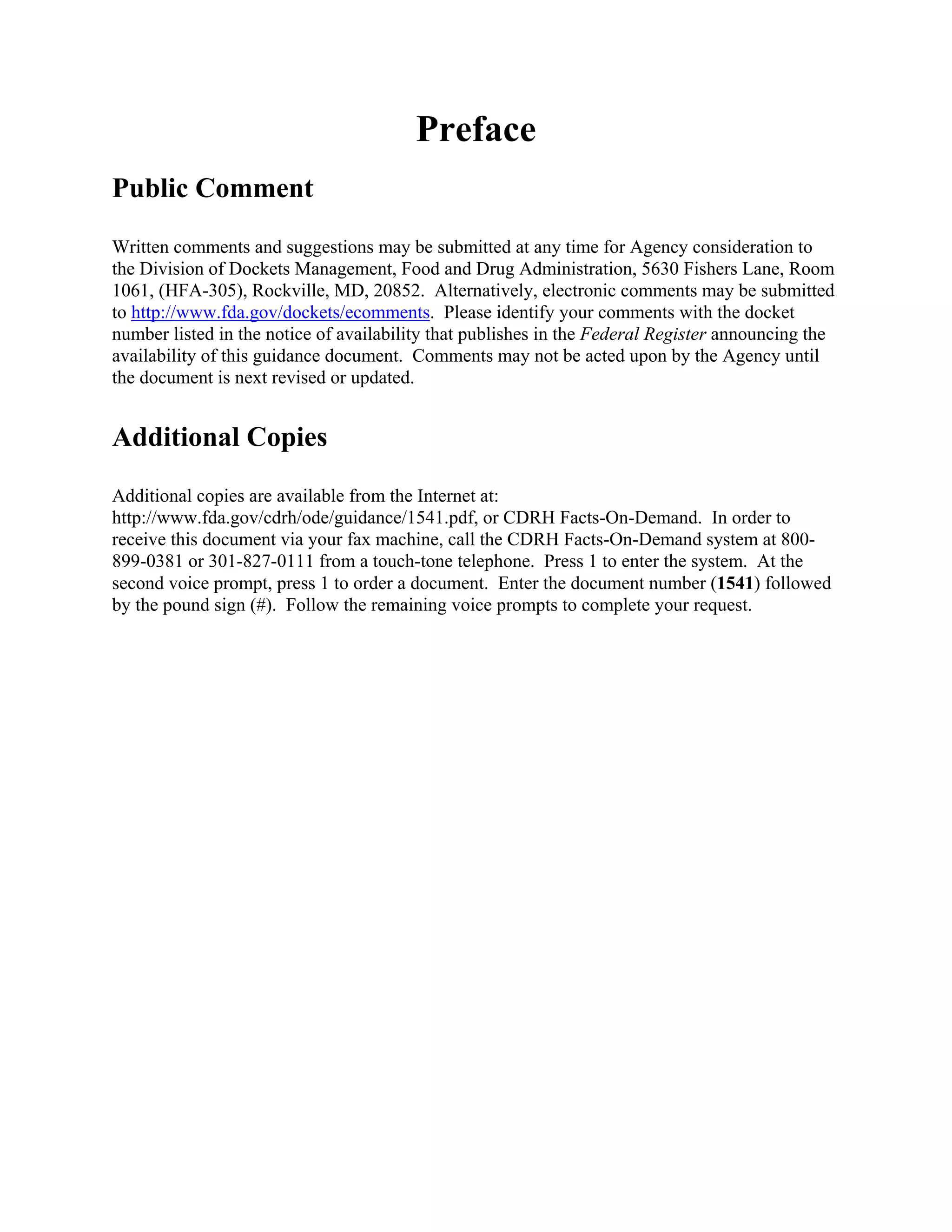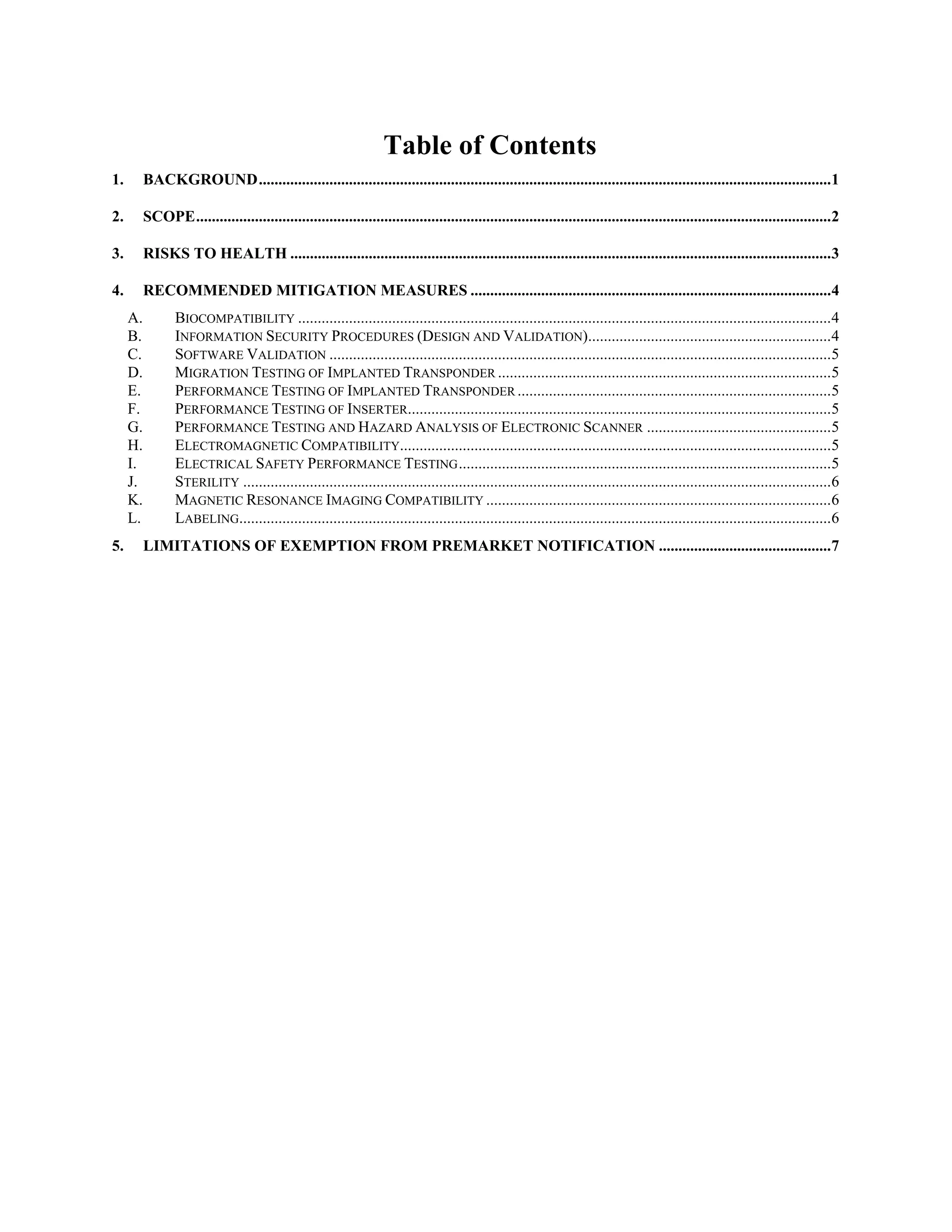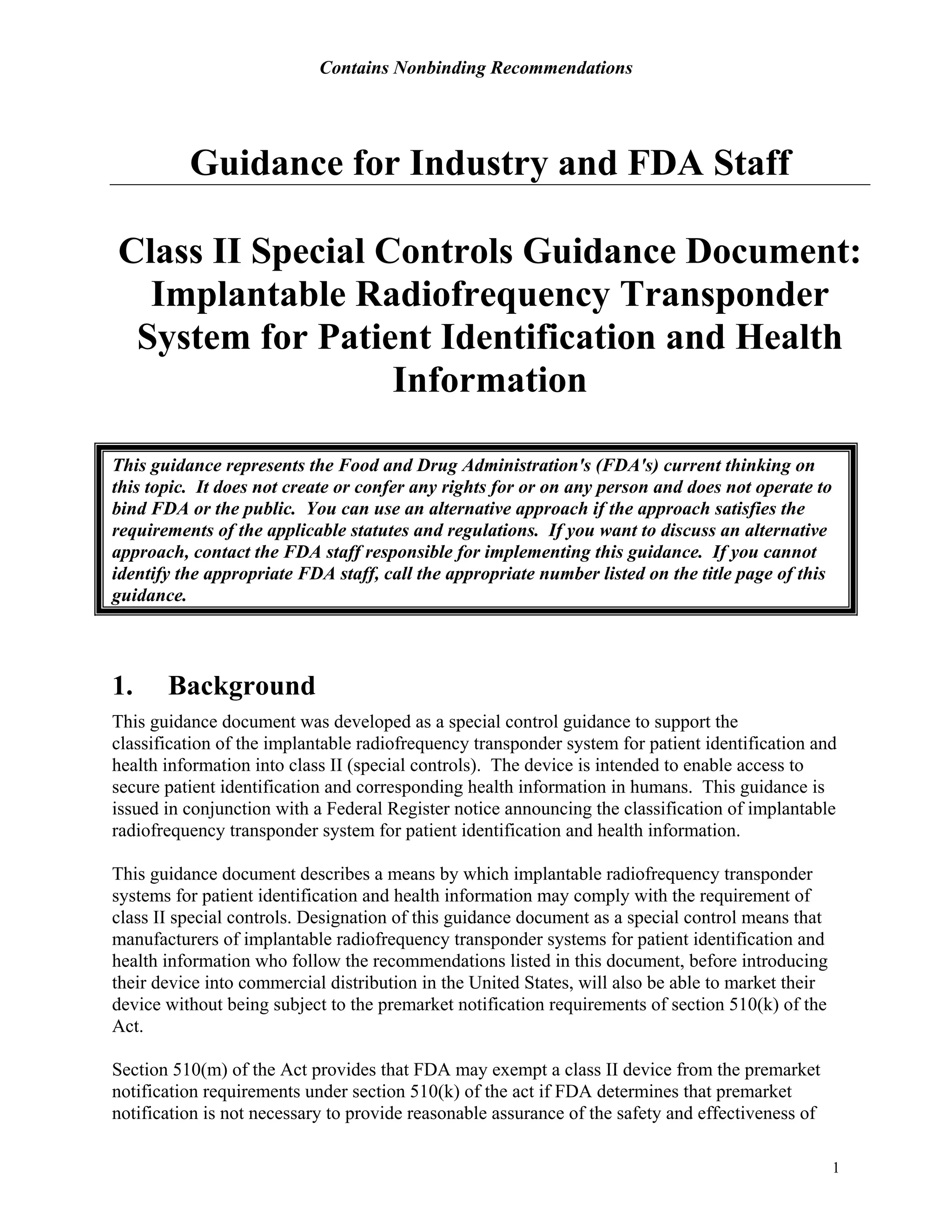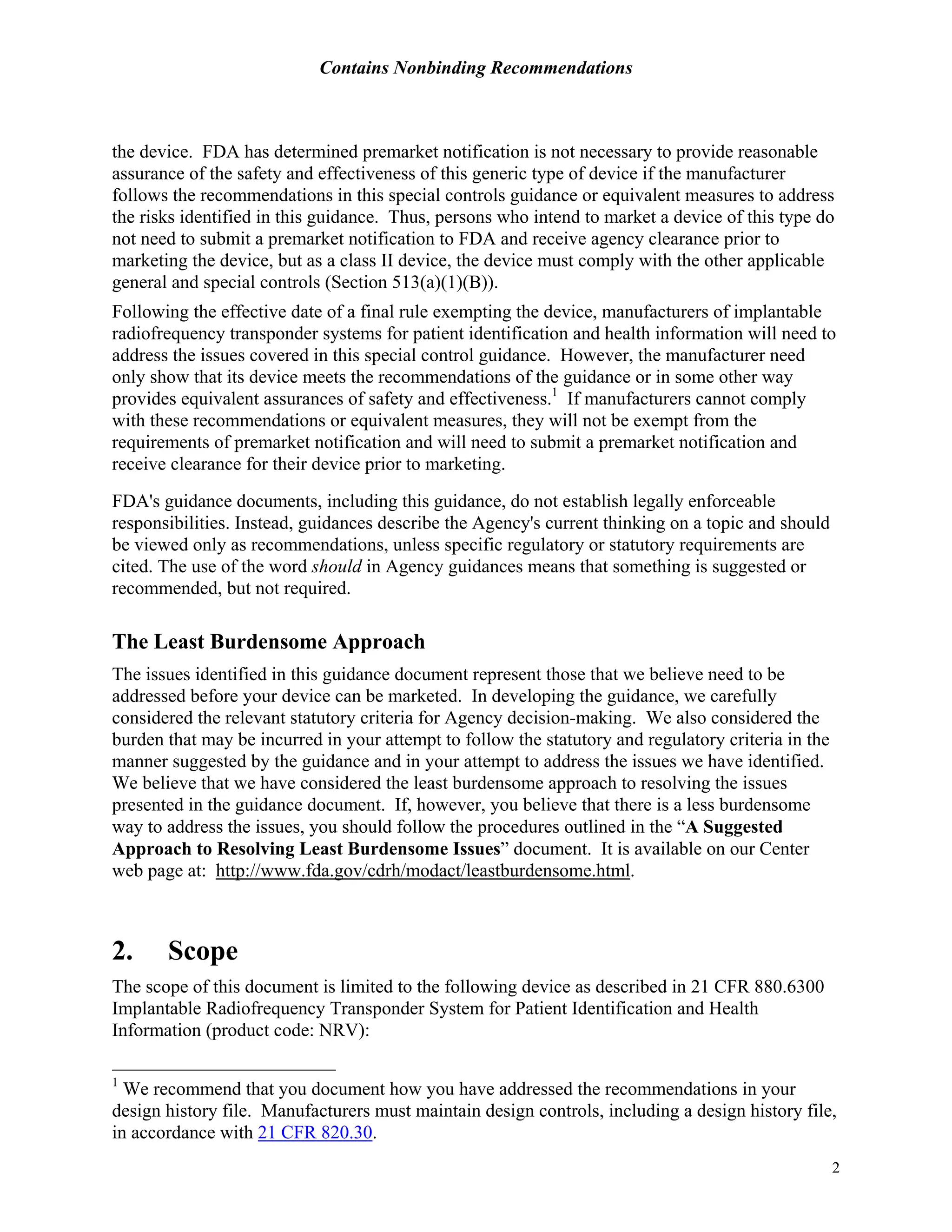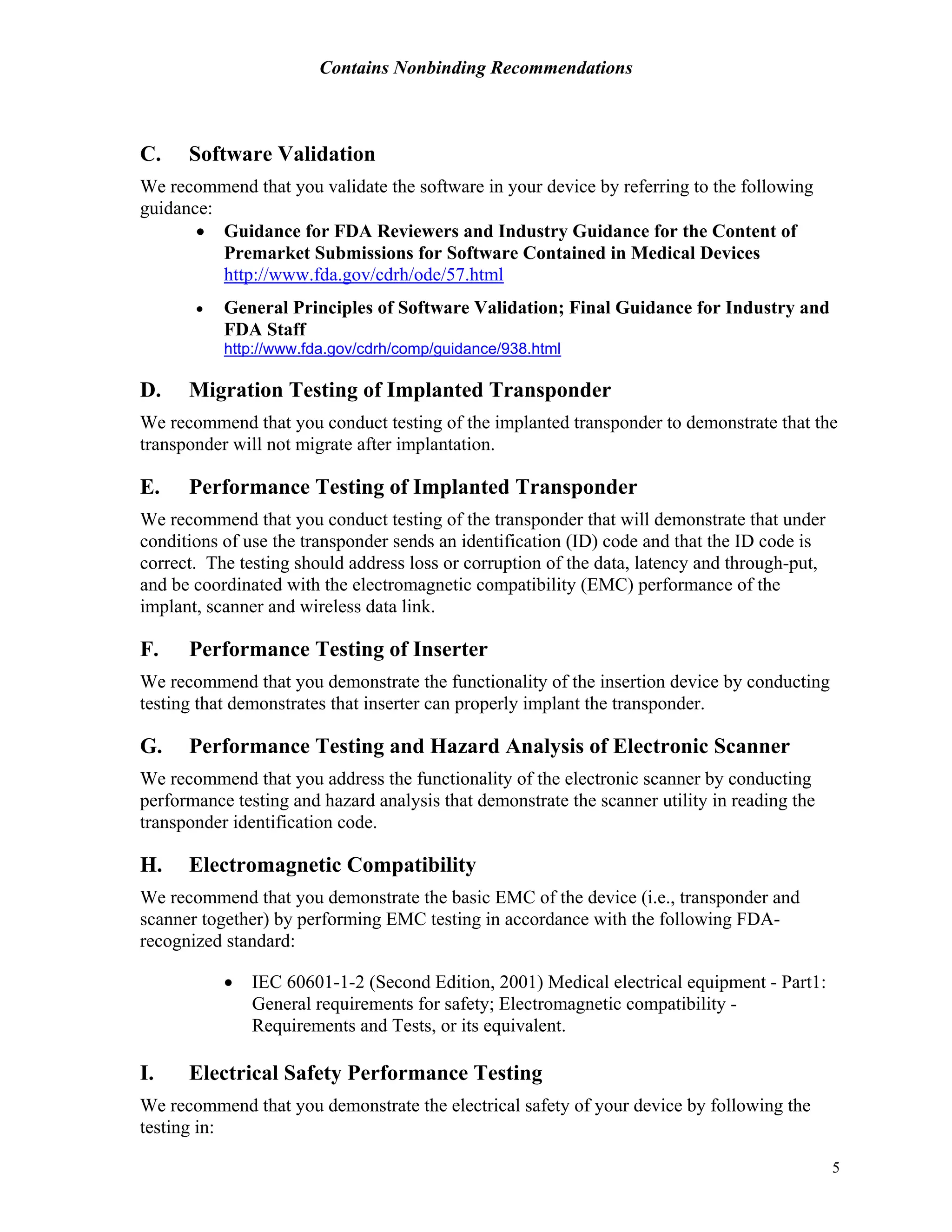This guidance document outlines the FDA's recommendations for the classification and requirements of implantable radiofrequency transponder systems for patient identification and health information. It details the risks associated with these devices and provides mitigation measures that manufacturers should follow to ensure safety and effectiveness, allowing for potential exemption from premarket notification requirements. The document serves as nonbinding guidance and emphasizes the importance of compliance with various safety and performance testing standards.

